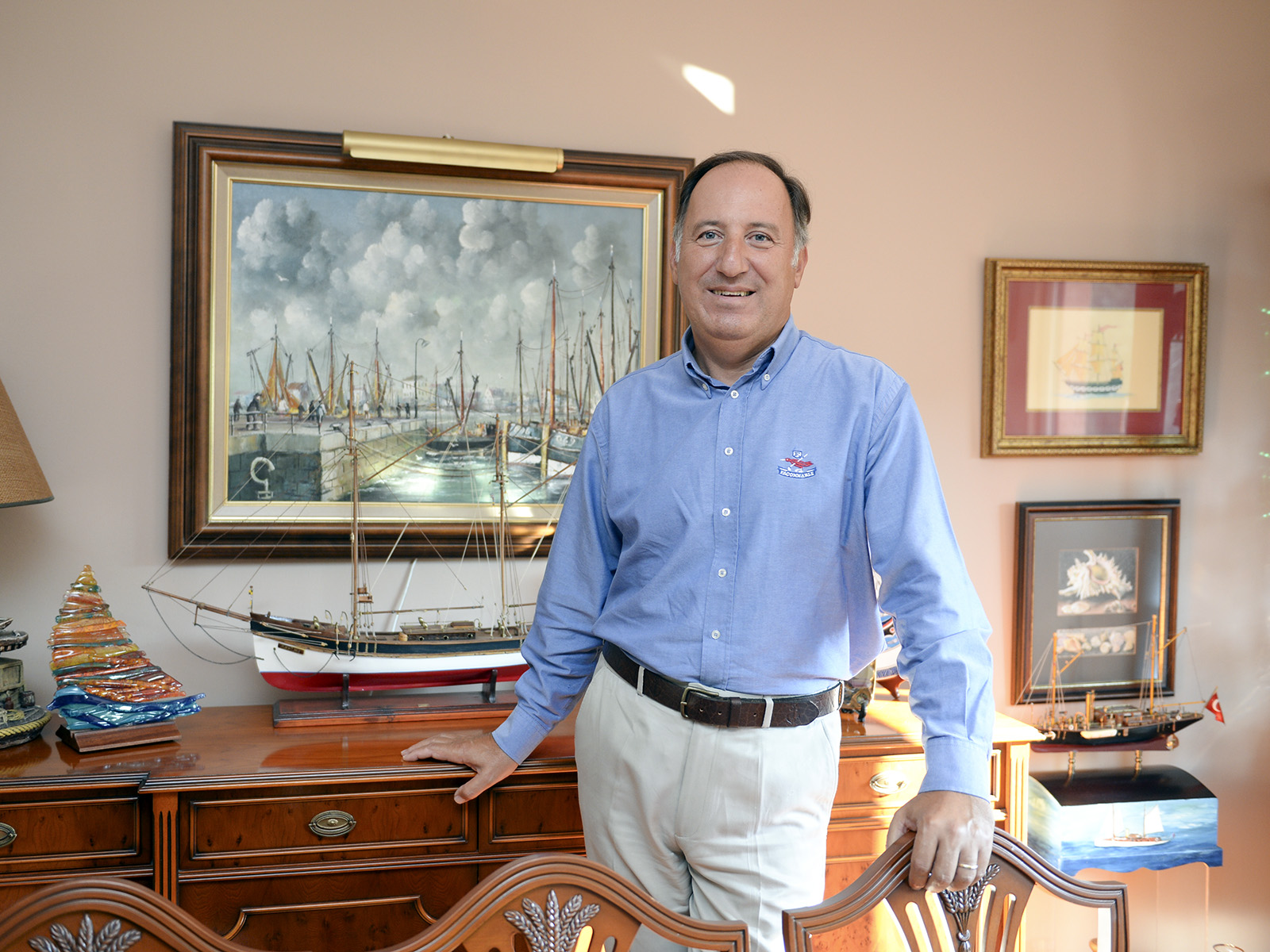Cem Gürdeniz: “No nation is born a sailor. It’s the state that makes a nation seafaring.”
Cem Gürdeniz is one of the few names who have comprehensive knowledge of maritime culture of Türkiye in every aspect. On the one hand, he has had the outstanding services he provided to our navy with the rank of rear admiral, and on the other hand, there are dozens of works he wrote on maritime, hundreds of articles, and valuable ideas he produced. For this very reason, when you start talking to him, the phrase that comes to your mind the most is "profound like an ocean".
In this interview, we would like to talk with our esteemed admiral about one of the areas in which he has deep knowledge: classic boats, of which value increases as their numbers decrease. Of course, we've made a point of mentioning about classical culture, classical values, the classics of Istanbul and, most importantly, what needs to be done to make our country become sailor.
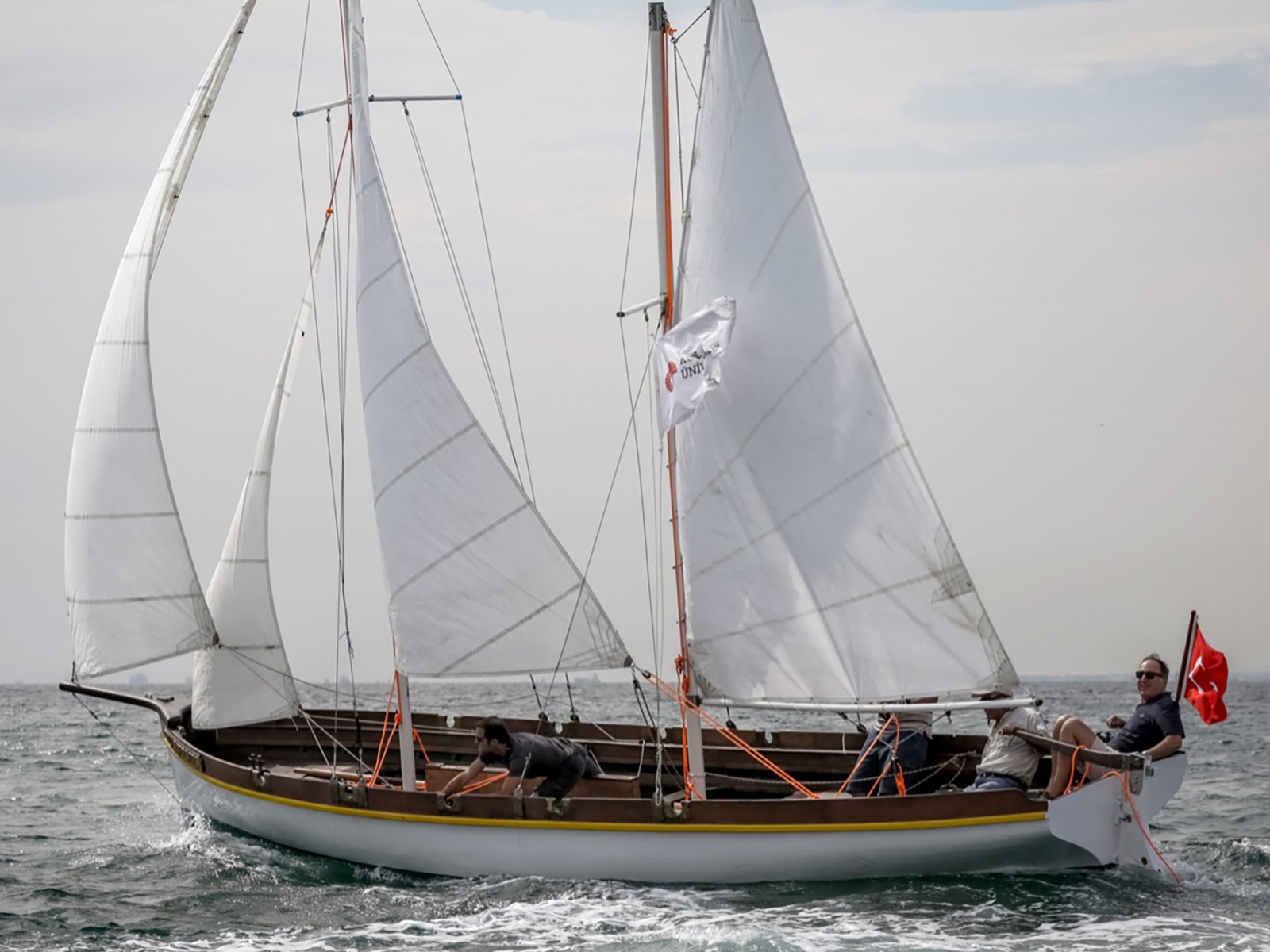
Kayhan Yavuz: Humankind cannot give up on the classics of anything. For example, the Mona Lisa painting, Deux Magot or Café de Flore in Paris, the Montblanc fountain pen, and the movie Bicycle Thieves. These are all classics. How do you comment about this love for the classics, which we all have to some extent? Is it because we couldn't do that well anymore? Or is it just nostalgia? Or else?...
Cem Gürdeniz: Quality always prevails over quantity. In the past, hand work and creativity were much more necessary and effective compared to today. Nowadays, let alone hand work, the human mind now has digital assistants such as industry and artificial intelligence. When we see a classic boat built in the early 1900s with the limited resources and techniques of that day, we take our breath away, and the real reason is not only because it maintains the elegant lines of the past, but also because it is the work of a process involving tremendous artistic creativity, patience and artisanship. Can we see the form of those elegant vessels and boats today? Only when they are imitated! Among the new generation vessels and boats, there are engineering marvels. However, most of them create visual pollution. You can't even look at them. You turn your eyes away. That's why, when you look at a classic boat that looks like a swan today, you admire the artistic work-or-art of human mind and effort, cast over time, and the manners respecting the maritime tradition and culture of those days. Besides, you admire some vessels and boats with nostalgic feelings because they remind you of your childhood and youth, so you'd like to see them all the time. Today, unfortunately, we have lost the spirit that represented the nobility of the past.
KY: Your childhood story seems like an Istanbul classic to me. Fatih, Büyükdere, sea voyages of those times, etc. What do you remember from those days?
CG: In '58, when I was only 4 months old, our family came from Fatih to Sarıyer for a summer house. Then my mother decided to stay permanently in Sarıyer. I can't help but think, "What a right decision she's made." for sure. Imagine that, when you see and get to know yourself, when your personality and character start to develop, when your options begin to increase, you meet the sea. You see the colors of the sea changing. You get to know the wind. There was a fishing weir in front of our house in Büyükdere. You see fish and fisheries. You see the fishing boats. You see those swan-like city line steamboats. You see merchant and war ships of various states passing through the Bosporus, in short, any kinds of ships. So, you see everything.
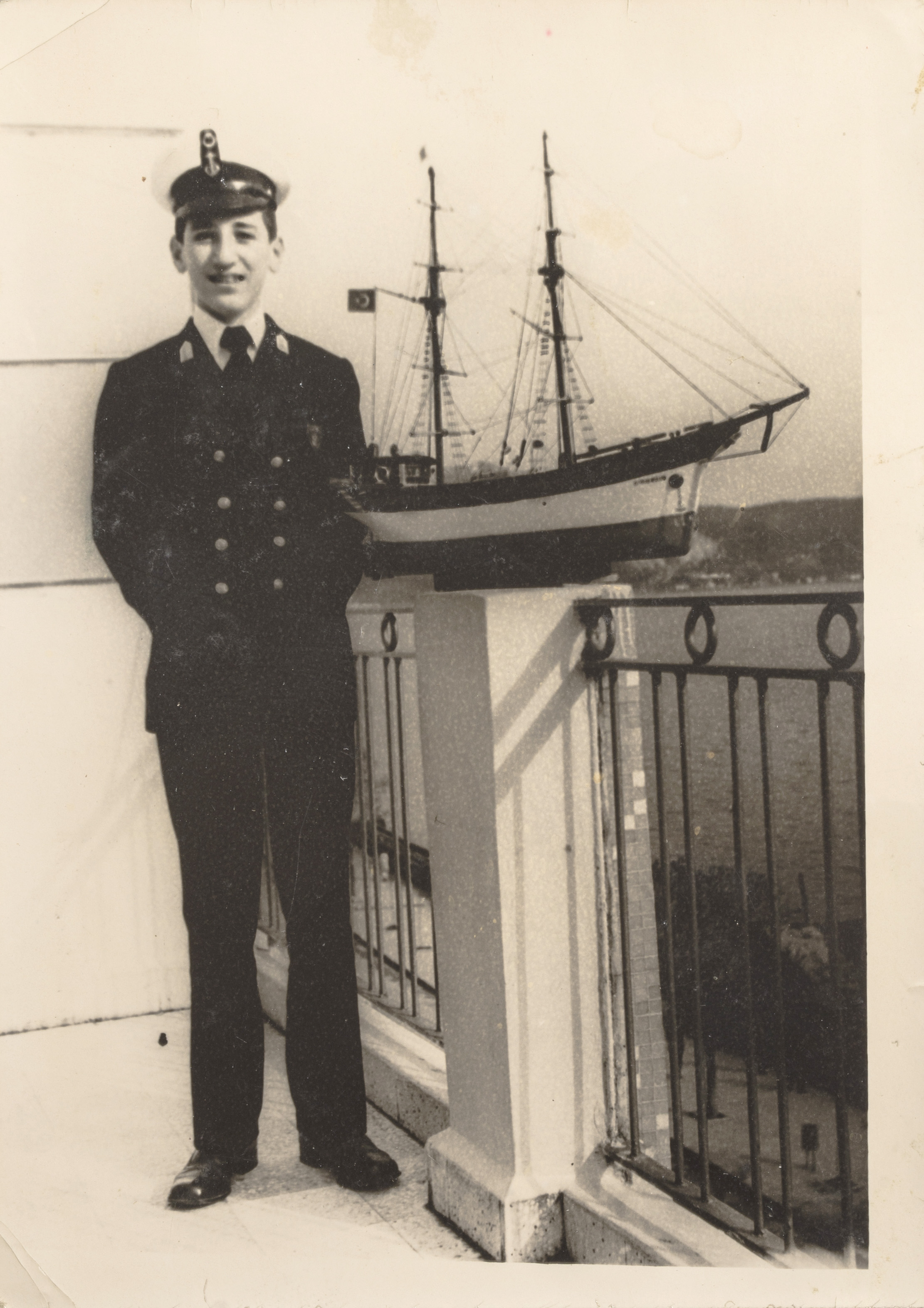
KY: Because in those days, the sea was not a spectacle, it was a part of everything...
CG: Of course. The sea was an indispensable part of life there. The house we used to live in was an apartment building with 10 flats on Piyasa Street, next to the Russian Embassy. Eight of the 10 flats had rowboats. Because at that time there was a rowboat culture. There was also moonlight culture along with it. At moonlight, we'd board a rowboat and row with the whole family. There is a place called White Park, it still stands. There would be programs, and people would go to listen to music. We would also go there by rowboat. We used to go fishing anyway. Every day between 3 pm and 6 pm, my late mother would go fishing herself. She was a housewife, but she caught fish herself. We grew up in such an environment. We drank the best water. Kocataş water is still famous water. We ate the best fish. There were many fish in the Bosphorus. In those days, fish massacres were not carried out by going almost as far as the coast of Yeniköy, as dragnets do today. Because it was forbidden. Of course, the pollution was not that much at that time. I remember the days when bluefish, bonito and mackerel were distributed for free on the shores of Sarıyer.
I have seen 47 countries so far. Thanks to my naval profession, I served abroad for 7 years. While I was a warship commander, I went to many different countries and lived there. But I always say this: I have never seen a more beautiful place than Büyükdere bay, that coastline between Sarıyer and Büyükdere. And still my love continues.
KY: The sea also has a transportation function. Especially steamboats. How much space did steamboats take up in life?
CG: My father was on the Marine Transport Inspection Board. At that time, his workplace was in Fındıklı. He would take a steamboat from Sarıyer at 7.30 am, go to Sirkeci by steamboat, and there was a direct ferry at 6.10 pm in the evening. Everyone who lived in Büyükdere in Sarıyer and worked in Istanbul would come by that direct steamboat. At that time, minibuses were just getting started. There was also the famous bus number 41. Also, shared taxis departed from Taksim. But the pleasure of coming to Sarıyer by steamboat was something different. Steamboats are a separate cultural area. I mean, that smell of steam mixed with the smell of mahogany and leather in the ship's lounge. That sound of the ship, its maneuvers in those turquoise waters. Those eddies produced by its propeller and rudder while sailing from the pier. It is impossible to forget those. We grew up seeing those beautiful ships, like the famous Stradivarius violins.
KY: Ships and boats have a different place in the love of the sea, right?
CG: Well, if you are going to make a person a sailor, you will first make that person love the sea and nature. Then, you will make that person love the ship, which is an integral part of the sea. So, if one of them works and the other doesn't, it doesn't work either, you have to bring the two together. You need to love the sea with your mind, heart and soul. Aesthetics is very important in the love of the sea. The beauty of boats is of great importance.
There are no nice boats today, and that's the problem. I mean, as a classic boat today, unfortunately we could not preserve those beautiful boats of that period. Moda rowboats, Aegean tirhandils, gulets, Sürmene takas, İzmir caiques, Black Sea galiots and many more beautiful vessel forms. We've lost them all. Nowadays, ships and excursion boats that resemble freaks, floating boxes, or creatures born disabled by radioactive contamination after nuclear fallout, which are thought to resemble pirate boats by their builders and operators, but do not fit into any boat form or ship type, are floating in our waters. There has never been a period when our maritime culture has been so polluted and corrupted.
There are nearly 6,000 registered wooden classic boats in the USA today. The number of boats registered in Türkiye is 140. For example, there were nearly 40,000 rowboats in Istanbul in 1890. When I was a child, there were still rowboats and small sailboats. Rowboat culture was dominant until the end of the 70s. Unfortunately, we couldn't protect it or take good care of it. I sometimes watch black and white Turkish movies, just to see the classic boats. You could see those sailboats, those dandies, those sharpies, those beautiful ketches in the movies made in the 40s, 50s and 60s.
KY: So, let's anchor right here. Let's take a closer look at classic boats. What are the criteria for a boat to be considered a "classic"?
CG: For a boat to be a classic, it is not enough for it to have been passed down from past to present. I mean, just being old is not enough. It is also important that its design is classical. Therefore, there is not only a year distinction in the classification accepted in the world today. For example, many maritime states classify by periods. The period before 1918 is considered as the distant historical era, the period between 1919-42 as the recent historical era, the period between 1943-75 as the classical era, the period between 1975-2000 as the recent classical era, and the last 25 years are called the contemporary period. The reason for this is this: replicas of old wooden classic boats around the world are extensively produced using other materials. Even though they are replicas, they are considered classics and can participate in races.
KY: Actually, when we look at the past, we have many examples. The takas of the Black Sea, the elegant rowing boats of İzmir, the Aegean tirhandils, the pleasure boats of the Bosporus, and many more! As far as I know, there are some of the most special examples of classic boats in the Rahmi Koç Museum in the Golden Horn. What are the most special and valuable classic boats in our country right now?
CG: Currently, the most valuable boats are preserved in the Naval Museum and Rahmi Koç Museum. In the Naval Museum, there are imperial caiques and small marine vessels used by Atatürk. Rahmi Koç Museum has one of the world's richest collections of steamboats and classic boats. In my opinion, among the most valuable classic boats in Turkey, the most important ones are: Savarona and Acar yachts, both of which were used by Atatürk. And also, the Minelayer Nusret in the First World War and Minelayer Thessaloniki, which formed the mine lines in the Dardanelles, with its current name the Gonca Excursion Steamship. In the Rahmi Koç Museum, it is possible to see many historically important ships and boats such as Fenerbahçe Steamboat, Galiot, Sadun Boro's Kısmet, which served on the coasts of Istanbul and Türkiye after the 1900s. There are also many rowboats, sailboats and various boats belonging to our maritime culture.
KY: Why is it important to preserve these boats?
CG: The first reason is to keep historical awareness and maritime culture alive. Second one is to ensure that maritime culture and heritage spreads in a way that sets an example for future generations. It is because the basis of maritime culture is to preserve the history. Preserving classic boats is a necessity of cultural enrichment. Wealth without culture can only be called vulgarity. No matter what your financial power is, if you cannot protect it, you cannot pass down the past richness of your maritime history to the future. And this requires awareness before money.
Turkish maritime history featured very valuable and important ships. How many of them could we protect? We even made Nusret a coaster. We sold the Ertuğrul yacht, Hamidiye and many others to scrap dealers for peanuts. Therefore, we must protect whatever we have.
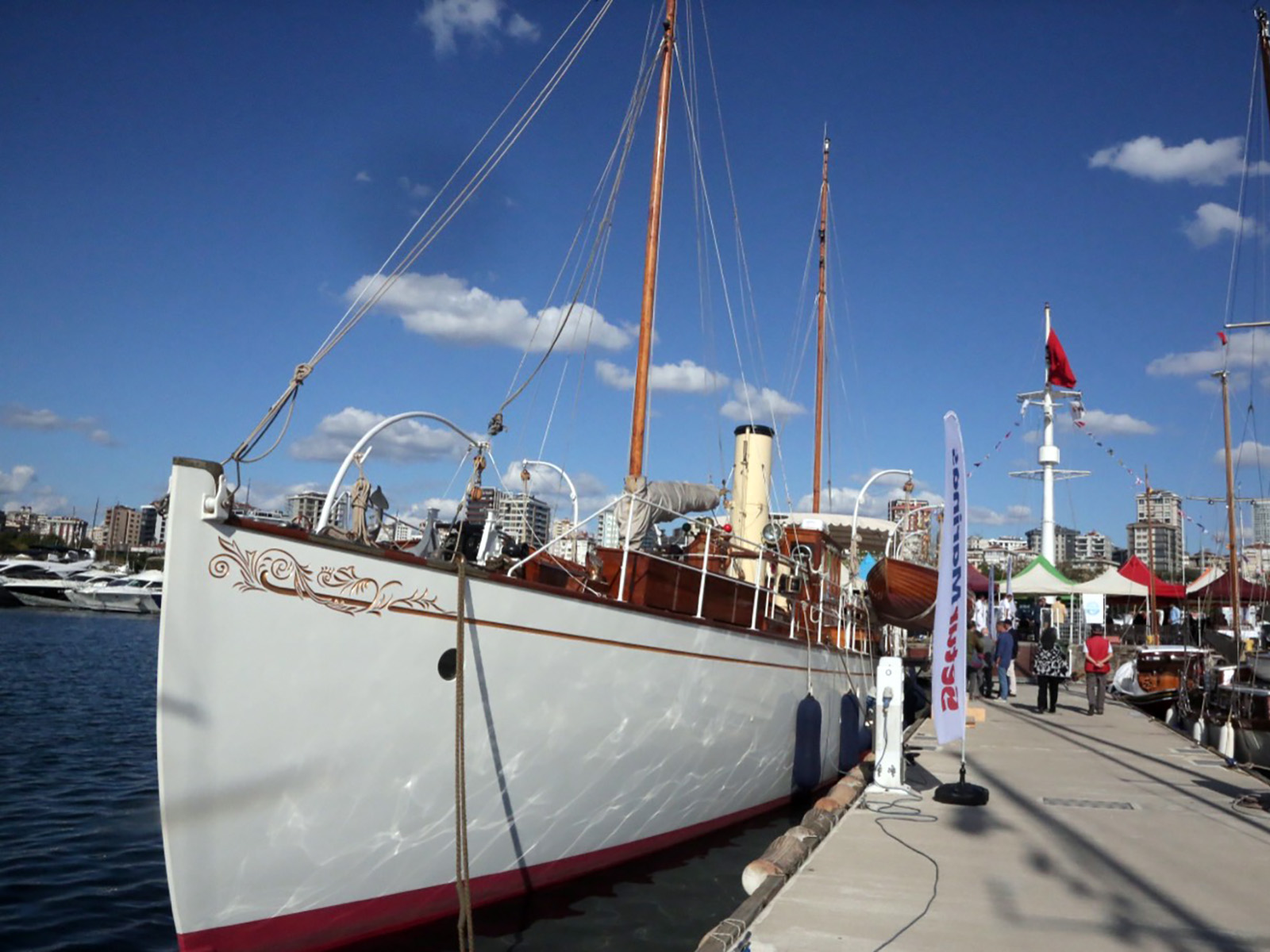
KY: There is an organization that you are among the founders of: Classic Boats Platform (KTP). How did you decide to establish such a platform in September 2019?
CG: Unfortunately, the research and discovery of many maritime cultural assets known as classic sailboats or motor yachts did not come to the fore until 2019. In fact, the state should have protected these types of boats, which have very special designs and features and should be considered cultural assets. But it did not. Since we have a land-oriented state tradition, it should be noted that we are doomed to this outcome. One proof of this is the Law on the Conservation of Cultural and Natural Property, which came into force in 1983. There is not a single article in this law regarding sea and maritime.
The Classic Boats Platform (KTP), which was established after the Istanbul Classic Boats Meeting, we held for the first time in our country on September 22, 2018, under the umbrella of Koç University Maritime Research Forum (KÜDENFOR), of which I am the founder, and which officially became operational on February 7, 2020, is a first in Türkiye in this context. Still continuing its activities under the leadership of Mr. Işık Aylan, the Platform has started to register the classic boats available on our shores through the infrastructure it has established and has organized panels and workshops on this subject at various times. Certification efforts are still ongoing within the activities aimed at preserving and developing the culture of classic boats in Türkiye. Currently, around 140 classic boats have been registered.
KY: What mission does the Classic Boats Platform have? What has been done so far under the umbrella of this platform?
CG: First of all, KTP has become the meeting point of classic boats and their owners. Before KTP was established, we brought together some of the wooden classic boats in the Istanbul region at Setur Kalamış & Fenerbahçe Marina for the first time on September 22, 2018. The second of the meetings took place at the same place after KTP was established on September 27, 2019, the third one took place at sea off Kalamış on 27 September 2020, and the fourth took place in Setur on 21 May 2022. The fifth meeting was held on September 25, 2022 at the RMK Industrial Museum, which has the richest classic boat collection in Türkiye, and the last meeting took place on September 17, 2023 at Setur Kalamış & Fenerbahçe Marina. The most important benefit of such meetings is that they bring together boat owners and sea lovers and raise awareness that will enable our cultural heritage to be passed on to future generations. On the days when the meetings take place, sea lovers can see and tour the beautiful and elegant boats, each unique in their own way, that they could only see in black and white old Turkish movies, at the Setur dock.
KY: What are the notable publications in the field of classic boats?
CG: The first thing that comes to my mind is the work titled "From Oars to Sail, A Destroyed Heritage", written by the late Cem Gür, our KTP member general coordinator, who we lost on April 17, 2021. This work has added significant value to our maritime culture in the field of classic boats. This work has been added to the entire corpus of Yücel Köyağasıoğlu, who has carried out very important field studies and books in his field and is still considered the doyen of classic boats of Türkiye.
KY: We talked about the past. Now, if you wish, let's talk about the future at the end of our conversation... Everyone loves the sea. Even if you ask someone who has never seen the sea, even he/she will say nice things about the sea. Despite this, we cannot say that we are a maritime society. What do you think is the main reason for this?
CG: No people are born sailors, they become sailors. It is the state that makes them sailors. But in our Türkiye, the state has never been a sailor. This is exactly the problem. We are not aware that we live in a peninsula state and in the most exclusive maritime geography of the world. After 1980, while the state was investing in textile, construction and tourism, if it had also added maritime to these fields, we would have been in a different point today.
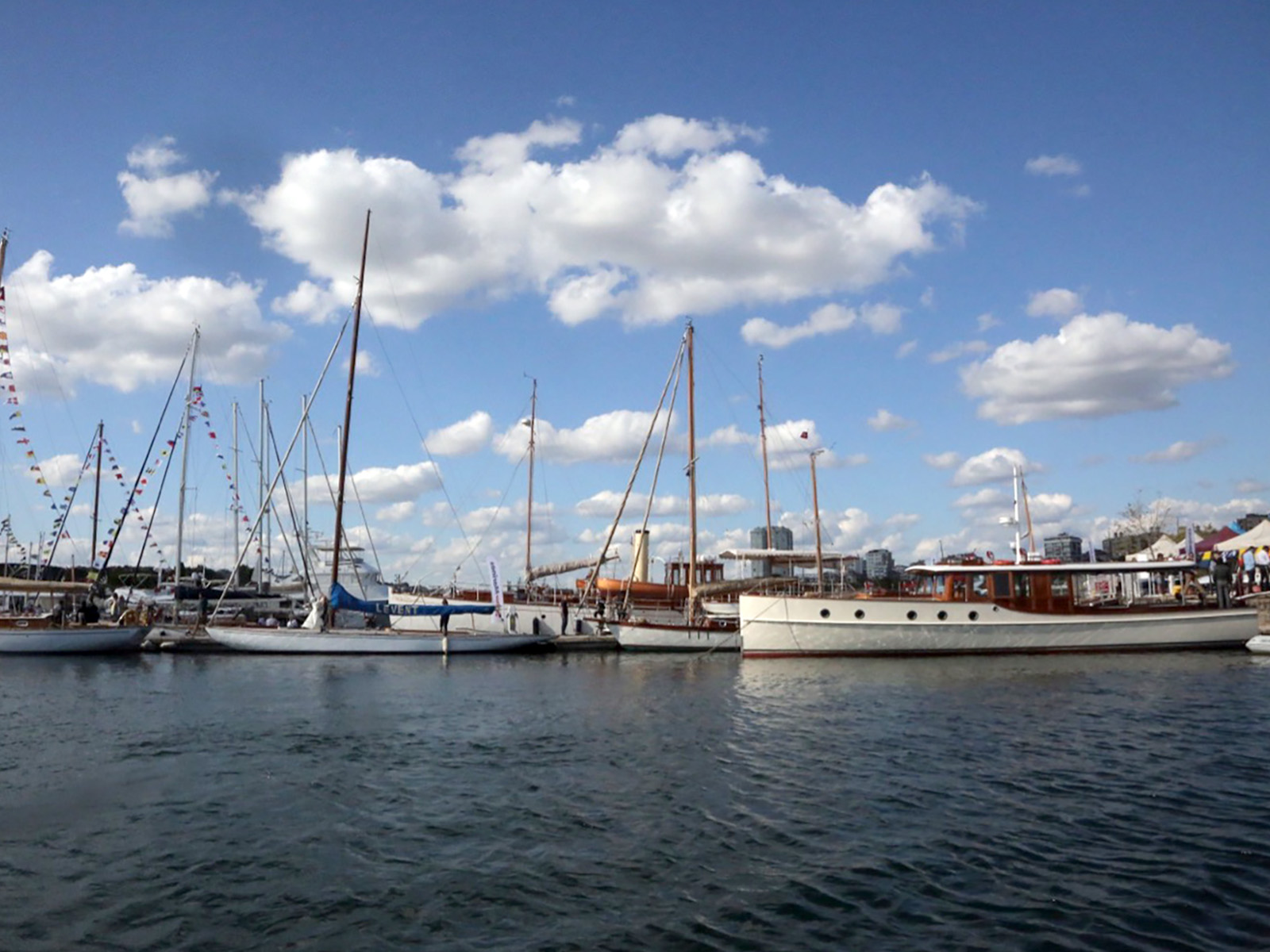
KY: So, maritime culture is formed together with state culture...
CG: The state should take measures and invest to connect people with the sea. As the people become richer from the sea, they will also become interested in the cultural dimension of the wild blue yonder. For example, there are everything encouraging the purchase of a car, especially loans, but there are no incentives or facilities for the purchase of a boat. However, when I was a child, an ordinary civil servant could own a four-meter boat. There was no berthing problem either. Even if you have a cheap boat today, there is no berthing space. Under these conditions, it is very difficult for people to become seafarers and get in touch with boats and the sea.
On the other hand, the number of maritime museums is extremely low for Türkiye. In Turkey, which has almost a thousand years of maritime history, there are a total of six naval museums and 12 ship museums related to seafaring and maritime culture. In comparison, the USA, with only 250 years of maritime history, has 240 naval museums and 210 ship museums. Let's not go too far. Let's see how seafarer Istanbul the most beautiful sea city in the world with a population of 20 million is. If only 350 thousand people use maritime transportation in a city with 14 million passenger movements per day… If the Golden Horn and Bosporus waters, blessed with the silhouette of the Şirket-i Hayriye ferries, the most beautiful passenger ferry type recorded in the world maritime heritage by history, are today exposed to visual pollution with the world's ugliest ship and passenger vessels that resemble irons… In a seafaring city of 15 million people, there is only one naval museum (Beşiktaş) and one industrial museum (Rahmi Koç Industrial Museum), and if there is no maritime museum… If there is only one ship museum (Fenerbahçe) in a city that is the oldest maritime city in the world, and if a museum has still not been established for the Yenikapı Shipwrecks area, which has the richest sunken ship collection in the world for the last 20 years… If there is not a single sea and ship themed square in a city with hundreds of squares… I can list more: In such a large maritime city, if there is only one region with 28 sailing clubs and continuous sailing activities all year round (Moda-Fenerbahçe)… If our citizens who drowned on the shores of Istanbul because they did not know how to swim make the news every summer… If the number of kebab shops in a city where the total coastal length of the Marmara Sea, the Black Sea, the Bosphorus, the Golden Horn and the Prince Islands exceeds 350 km, is tens of times greater than the number of fish restaurants… If the number of maritime antique shops and maritime bookstores is less than 10 in a city with thousands of years of port, shipping and nautical history... If the number of marine painters grown in the city does not approach three-digit numbers… If ship modeling artists don't even have an association room to come together… If there is no chair, institute or research center on maritime power and maritime culture in any university of the mega city with hundreds of universities… If the Istanbul Metropolitan Municipality, of which budget is larger than the budget of many states in the world, does not have an office or a department dedicated exclusively to the determination, protection and development of the maritime culture of the city… If a maritime region, like the Golden Horn Shipyards Region, where shipbuilding has continued uninterruptedly since 1455, that should be protected not only by national authorities but by UNESCO, is being transformed into shopping mall and five-star hotel region… If today the number of boats has fallen below a thousand whereas there was a rowboat culture with 40 thousand rowboats in Istanbul in 1895… If today it has become almost impossible to find a clean, free and safe place to swim in Istanbul while there were dozens of public beaches, sands and sea baths from Şile to Pendik, from Kilyos to Florya, in the city of which population had not even reached 1 million in the first years of the Republic… Then, can we talk about Istanbul's seafaring city feature and the maritime of our country? So, first, the state will be a sailor. When our state becomes a sailor, we will also be sailors.
KY: So let's stop here and leave those concerned with these strong warnings and a list of solutions. Thank you very much.
CG: You are welcome.
Interview: Kayhan Yavuz, Setur Marinas Highlights Editor


